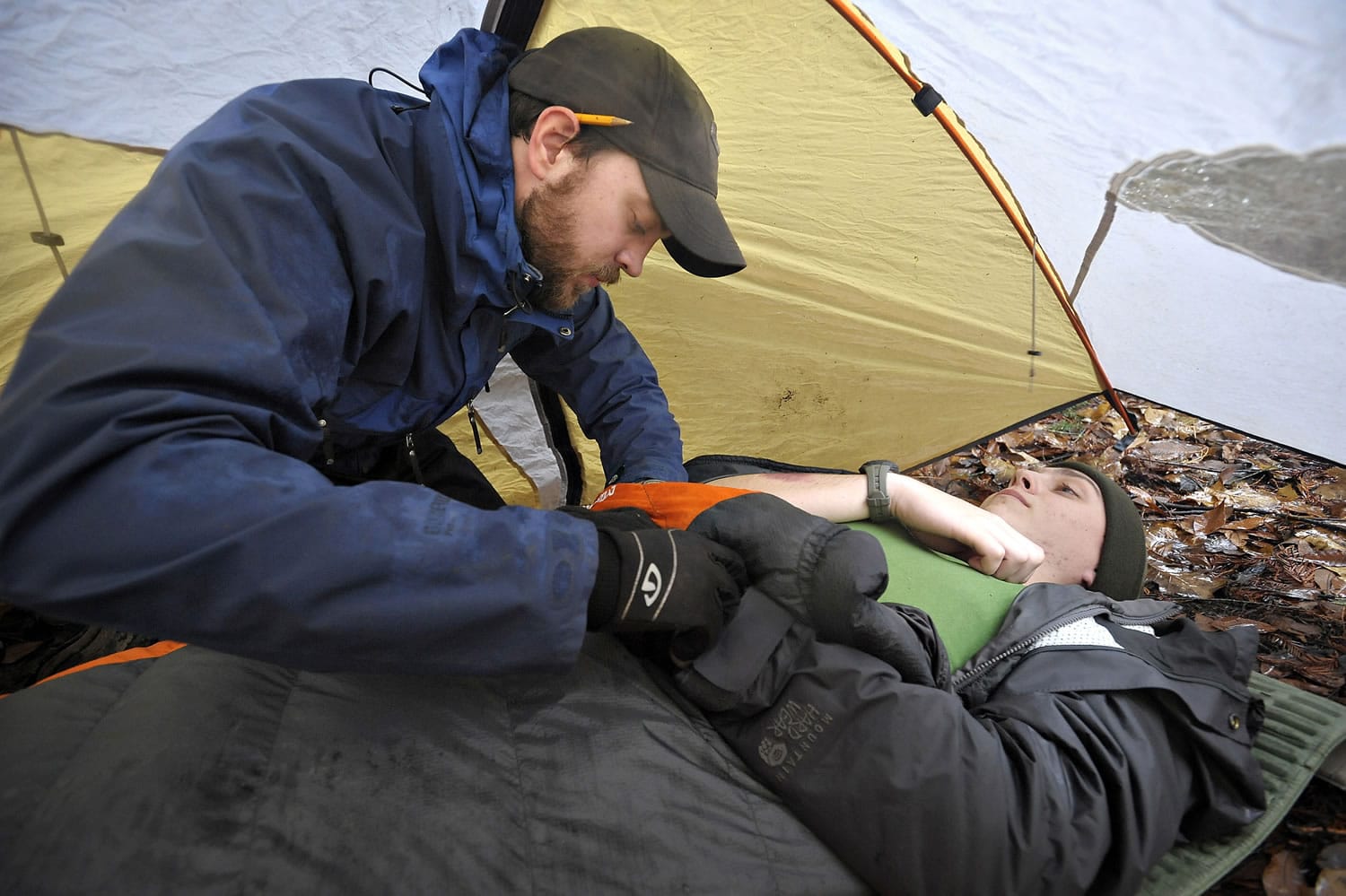CORVALLIS, Ore. — It’s a cold and wet morning and Oregon State University student Alex Funk is hiking through the woods when he comes upon fellow student Molly Stiebber lying on the muddy forest floor after breaking her leg.
But before Funk can rush to her rescue, instructor Ty Atwater comes in.
“Let’s make her allergic to latex,” Atwater says. Stiebber and Funk nod and Funk breaks out a tarp to cover his friend and protect them both from the rain while providing emergency care.
Other than being cold and wet, Stiebber is fine. The forest floor is a small patch of grass outside of the Dixon Recreation Center. And instead of an actual broken leg, Stiebber has special effects bruising makeup. Both Stiebber and Funk are students in OSU’s Wilderness First Responders course designed to train students on how to handle injuries in the wild. Stiebber’s “injury” is part of Funk’s final exam for the course.
“Everything that’s happening is meant to, as closely as possible, simulate a real world scenario for the students,” said Atwater, a climbing and wilderness skills coordinator for the Adventure Leadership Institute.
“A lot of this is our effort to teach them that, unlike an urban environment where you expect emergency services to show up in five to 10 minutes, we’re in a wilderness environment which means we’re more than an hour from definitive care.”
The student caregivers are tasked with assessing the student patients, providing them with emergency care and preparing them to be transported by emergency responders. The students have less than one hour for the exam to simulate the idea that it will take at least one hour for emergency responders to arrive.
Having Stiebber be allergic to latex is not a curveball, but an application of lessons learned through the 80-hour course.
“Typically, we focus on a muscular-skeletal injury of some sort,” Atwater said. “So think sprain, strain, dislocation or fracture. It’s not simple, but relatively straight-forward to care for. It’s not to throw some curveball at them at the last minute; it’s to help them apply what they’ve learned to effectively manage treatment of their patients.”
The heavy rain during the final exam on Dec. 20 was nature’s curveball. And rather than adding extra stress or pressure, the students said they were happy to have the rain as it made the exam more realistic.
“It adds another challenge to it. It really makes you think about every move you make,” Funk said.
“It rains here all the time. It’s kind of a pain to have another thing to deal with but it helps you focus because it feels real,” Stiebber said. “We’ve been working it up the entire week. And we learned each little piece gradually.
“And then it all comes together in this. You don’t know what you’re going to find and you have to go through each piece to try and get it done.”
While the course is offered through OSU and the Adventure Leadership Institute, the course does not count for college credit. But more than 100 students take part in the course each year, Atwater said.
“I’m a big outdoorsman. I love going rock climbing and different things outside,” Funk said.
“I’m not a particular lover of the rain. But I think this was a lot of fun and could come in handy someday.”



